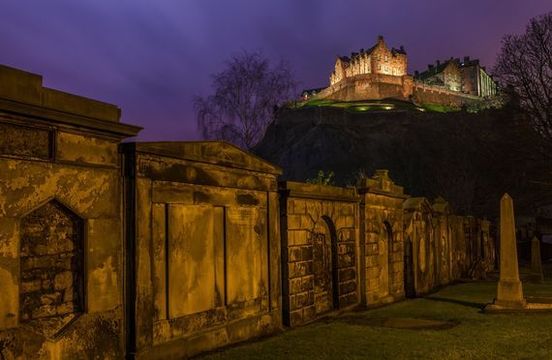
Edinburgh CasteGetty images
Still Auld Reekie after all these years...A trip to Edinburgh guarantees a ghostly experience.
Editor's note: Originally published in 2018.
Beautiful Edinburgh with its hilly terrain and matchless architecture is one of my favorite places to visit.
Although its dark past history included wars, plagues, and gruesome executions, today’s Edinburgh is a spirited, fun city offering fine restaurants, cozy pubs, interesting museums and a vibrant theater scene.
Read more
While Edinburgh’s historical landmark buildings and legends of ghosts remain as rich reminders of this city’s past, an abundance of new projects includes the recycling of old buildings for new uses, the creation of contemporary ones and the construction of a modern public transportation system that make Edinburgh very much a city for the 21st century.
With direct train service from London’s King’s Cross station, we arrived in Edinburgh in just over four hours. Coming out of Waverley station we emerged onto lively Princes Street, the main thoroughfare that separates the Old Town from the New Town. Two imposing historic castles perch high over the heart of the city at opposite ends of the street in the center of town; it is a magical scene. The city is built upon a number of extinct volcanic hills and is dramatically nestled between Calton Hill, Arthur’s Seat and the Salisbury Crags, a series of starkly beautiful cliffs of black, glassy volcanic rock.
We strolled to the western end of Princes Street where the north side of the street is lined with scores of stores including Jenners, the oldest independent department store in the world. Just behind the stores lies the New Town, which was built in the 18th century to relieve the congested, claustrophobic conditions then existing in the Old Town. The opposite side of Princes Street is the verdant oasis of the Princes Street Gardens. These public gardens are home to the Sir Walter Scott Monument, to a colorful floral clock that actually registers the correct time and to several museums including the National Gallery of Scotland.
Covered with sculptured stone statues representing characters from Sir Walter Scott’s novels, the towering massive black and gold Scott monument features a seated statue of the honoree and his dog. The 287-step climb to the top of the monument rewards one with outstanding views of the city. It is the largest monument to a literary figure in the world.
From the gardens, it’s a gentle climb up to the Royal Mile, one of the most famous streets in the world. The Mile begins at Castlehill and continues east down the hill along Lawnmarket, High Street and Cannongate.
On Castlehill, Edinburgh Castle soars against the sky from its perch on Castle Rock, one of Edinburgh’s many extinct volcanoes. At the entrance gate, statues of King Robert the Bruce (1274-1329) and Sir William Wallace (1270-1305) stand guard and welcome visitors. Once a strategic location for military battles, the Castle now is a beloved, familiar landmark. I often find it helpful in getting my bearings in central Edinburgh. A castle has stood on this spot since the 11th century, though St. Margaret’s Chapel, the oldest structure in Edinburgh, is all that remains of the original castle. Scotland’s Crown Jewels are on display within the castle next to the ancient Stone of Scone which has been used at the coronation of Scotland’s monarchs for centuries. The Stone was taken to London many years ago and displayed in Westminster Abbey until it was returned to Scotland in 1996.
Edinburgh Castle is said to be haunted, with a bagpipe player and a headless drummer among the resident ghosts. In fact, the city is famous for its ghost stories. A whole business has sprung up around these eerie stories and a number of companies offer walking tours of the various phantoms’ venues. One such company is Witchery Tours, which begins its guided walks outside the Witchery restaurant on Castlehill. This popular restaurant is housed in a 16th-century building and is worth a visit for its great food, albeit at steep prices, served in its sophisticated dining rooms and romantic Secret Garden.
A loud blast emanates from a cannon at the castle most days at 1 p.m. The firing began in 1861 for the purpose of allowing seamen to set their watches. Now, it is just a part of Edinburgh tradition. The thunderous sound reminded us of the time and we took a break from the historic sights of the Royal Mile to browse its shops and satisfy our hunger and thirst.
We stopped into the Wee Whisky Shop on Lawn-market, where linen (lawn) was manufactured in the 17th century, and ended up purchasing some of the world’s smallest whisky bottles. The Old Town has its share of pubs, and we are always warmly welcomed at the Waverley on St. Mary’s Street and the Bow Bar just below the Castle. We also are fond of the seafood served at Creelers. Next time we must pop into Geoffrey’s on Castlehill and investigate its reputation as the best kilt maker in the world.
The remainder of the Royal Mile lay ahead. St. Giles’ Cathedral, with its delicately carved Thistle Chapel and outstanding stained glass windows, is where the Scottish reformer John Knox once preached. While a church has been on this site since the 9th century, much of what is there today dates to the 19th century. Look down at the cobblestones in a heart shape in front of the cathedral. This is the spot where the infamous Tolbooth Prison stood, known as the Heart of Midlothian. Local residents still spit, according to custom, on the heart shape as they pass by. Later in the day I popped into Blackwell’s, a bookstore that has served Edinburgh for more than 150 years, to purchase a copy of Sir Walter Scott’s novel The Heart of Midlothian, which sets the forbidding prison at the very center of its narrative.
The ground underneath the Royal Mile contains numerous closes, which are steep, narrow alleyways, but Real Mary King’s Close, open to the public by tour only, is the best known of them. This close is buried under the City Chambers that were built in 1753 to try to block out the plague that stormed through this network of hidden streets where people lived and worked for centuries. Visitors continue to bring dolls to the close for the small girl who died there in the 18th century and whose ghost is said to haunt the premises. While some may scoff, we found it rather poignant to enter the eerie, dark, dank area and suddenly see masses of brightly colored toys piled high that continue to accumulate there from visitors to the site. In keeping with the tradition, we left a small pretty rag doll with blond yarn pigtails at the top of the heap.
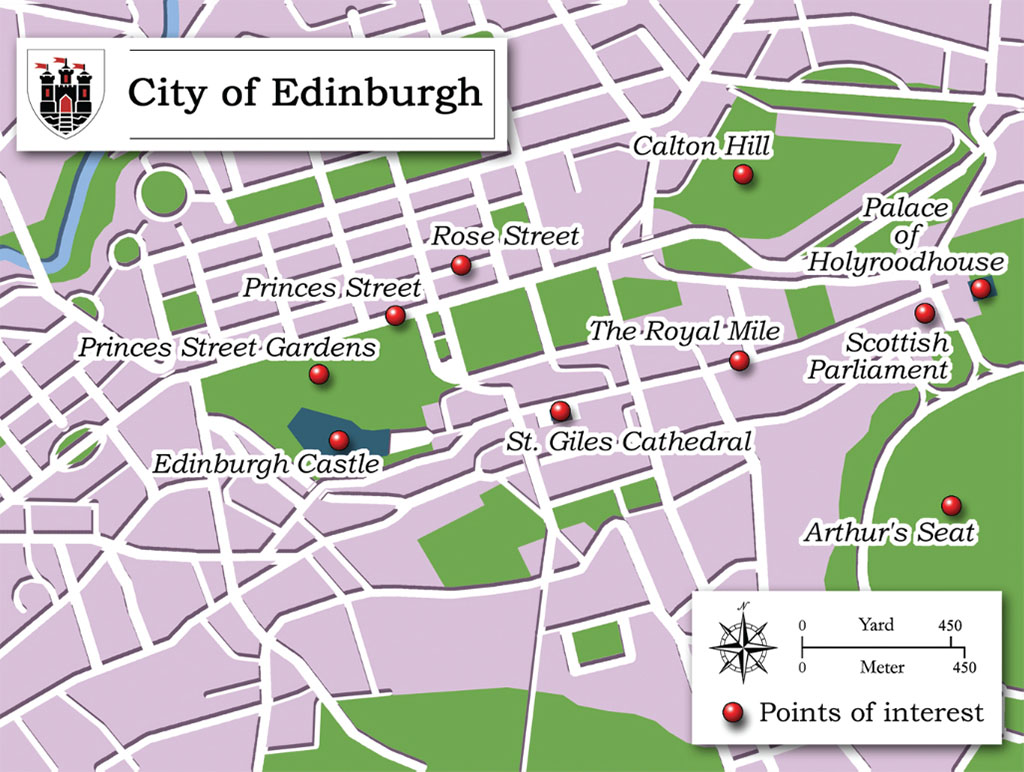
GREGORY PROCHE
The People’s Story museum which celebrates the citizens of Edinburgh from the 18th century to the present through oral history, written works, visual displays, sounds and smells. This is a terrific place to get a grasp on how Edinburgh became the city it is today.
The nearby Scottish Parliament, one of Edinburgh’s newest buildings and perhaps its most modern in design, is in sharp contrast to the ancient buildings around it (including the Palace of Holy-roodhouse next door). The enactment of the Scotland Act in 1998 paved the way for the first Scottish Parliament since 1707. Now it is ensconced in a home completed in 2004 with an innovative design created by the late Enric Miralles.
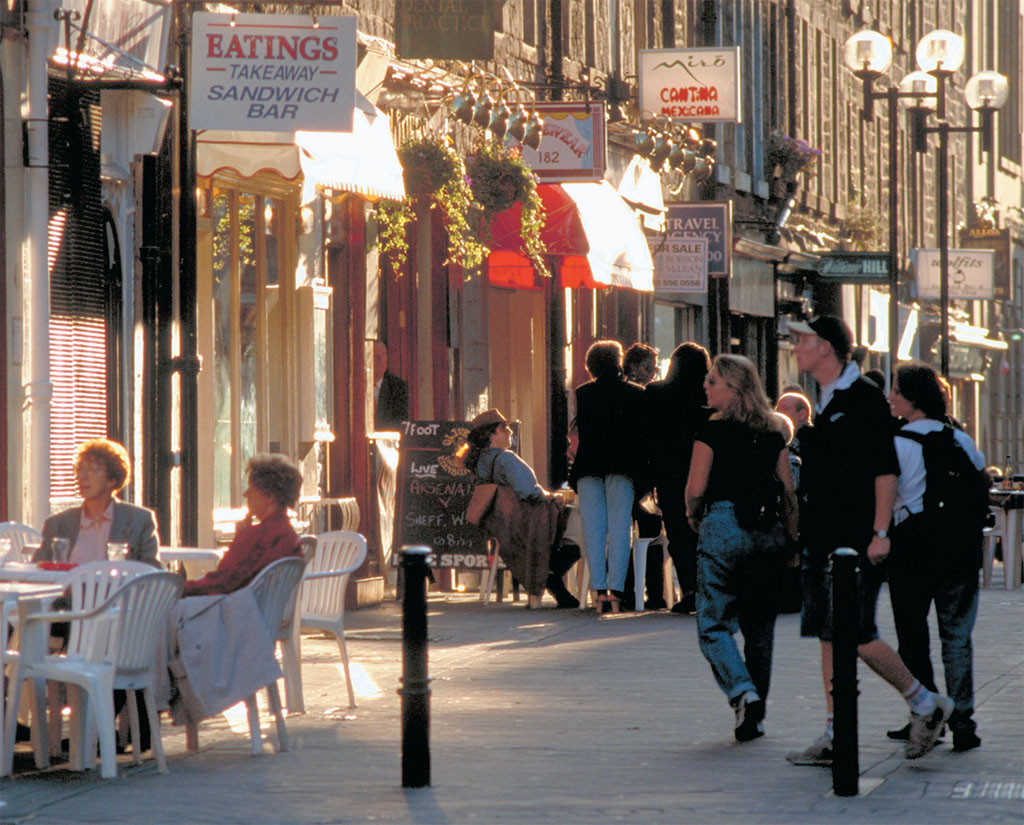
BRITAINONVIEW
At the foot of the Royal Mile stands the Palace of Holyroodhouse, which has strong associations with 16th-century Mary, Queen of Scots. Today the palace is still used by the Queen as an official residence. When the Queen is not in residence (which is most of the year), the State Rooms are open to the public. Be sure to visit the palace’s Queen’s Gallery, a contemporary space with changing exhibitions from the Royal Collection.
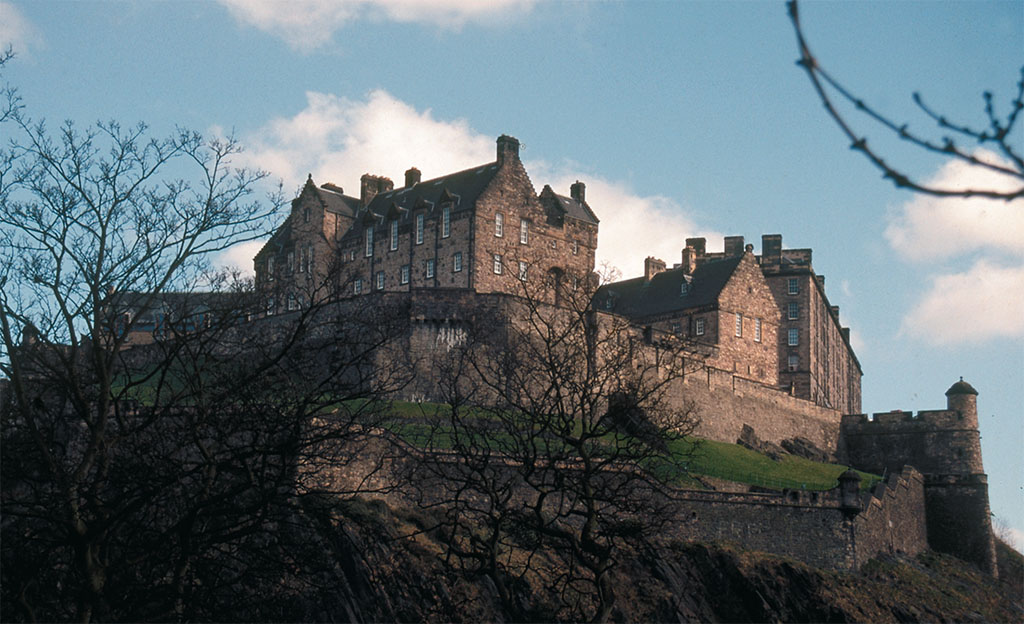
DANA HUNTLEY
Within Holyrood Park is Arthur’s Seat, the tallest of Edinburgh’s seven hills and another of the city’s extinct volcanoes. This is not a climb recommended for the faint of heart (or one that I would do on a very windy day), but the views from the top are worth the effort. On a clear day you can see all of Edinburgh, beyond to the Firth of Forth and as far into the distance as Fife and the lower highlands. Continue down the hill on the opposite side to the village of Duddingston for a drink at The Sheep Heid Inn, which claims to be the oldest surviving pub in Scotland.
To the north of the Old Town and across the street from Princes Street Gardens, the New Town contains block after block of well-preserved Georgian houses and buildings. George Street forms the heart of the New Town, from St. Andrew’s Square at one end to Charlotte Square with its magnificent Georgian House. The Georgian House, a Scottish National Trust property, provides a glimpse into how the urban upper classes lived during the 18th century.
Edinburgh is putting some of its historic buildings on and around George Street to new purposes. Grand bank buildings have been turned into stunning places in which to dine and drink as the city’s lively nightlife now centers here. Centotre, translated to mean 103, is an excellent example of a historic space being put to a new use. This chic Italian restaurant is housed within an impressive old bank building with beautiful interior architecture.
The old Physicians Hall with its columned portico and the impressive interior is now The Dome restaurant and bar. A prosaic new office block’s third floor has been beautifully turned into Oloroso, serving some of the best steaks in Edinburgh while offering superb views from its roof terrace.
Pedestrianized Rose Street used to be the service ally for buildings on Princes and George Streets, but now it is a pub crawler’s paradise. The narrow, lively street is lined with pub after pub – many of which have stood here for decades. Some of our favorites include the Kenilworth with its brightly colored floral hanging baskets outside; the Abbotsford, commissioned by Jenners department store in 1902; and the Gordon Arms, with its recognizable dark brown and white facade.
As Edinburgh focuses attention on the greening of the city, it is currently engaged in the construction of a new public transport system. A century or more ago Edinburgh laid the first tracks for a tram system that traversed the city. The network operated until 1956 when the tracks were pulled up, and public transport around the city became entirely by bus.
Today, Edinburgh is again digging and laying tracks for three lines that will form the new sleek, modern tram system that will get people around Edinburgh quickly. Princes Street will be closed through November 2009 while the noisy digging is done (though it will reopen temporarily during August’s Edinburgh Festival). The new tram system is scheduled to start operations in July 2011.
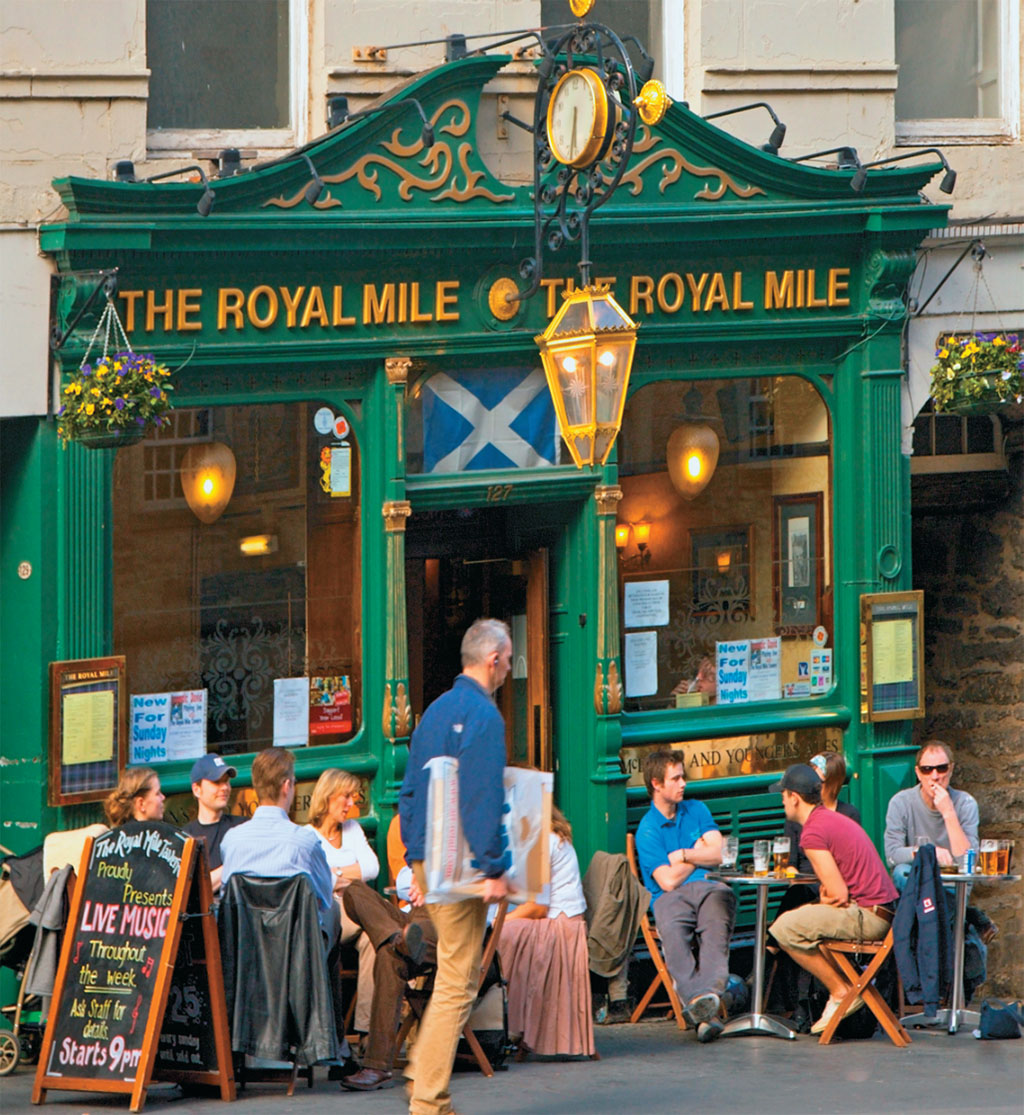
© PHIL SEALE/ALAMY
In order to get a real feel for the city of Edinburgh, plan on a minimum of two or three days; it still won’t be enough to do “Auld Reekie” justice. There are many options for overnight accommodations, but here are three tested suggestions that fit different budgets. The grand dame of Edinburgh accommodation may be the 5-star Balmoral, right next door to Waverley station and North Bridge. A moderately priced hotel is the smaller Channings on Learmonth Gardens, which has the ambience of a country home with a city location. The Abbotsford Guest House, just a short walk from Princes Street, is a traditional bed and breakfast establishment with eight rooms and quite reasonable rates.
This is a city of celebrations and festivals. While Scotland marks the 250th birthday of Robert Burns’ birth with special events this year, Burns Night annually commemorates the birthday of the beloved poet every January 25. It is customary on this night to dine on haggis, the national dish of Scotland.
Edinburgh’s most popular event takes place every August—the highly popular Edinburgh Festival. Another of the popular summer events is the Edinburgh Tattoo, a stunning display of pomp and circumstance with military marching bands, acrobats and much more that takes place in the forecourt of Edinburgh Castle. Each night the tattoo movingly ends with a lone bagpiper playing. Everyone in the audience crosses hands and sings “Auld Lang Syne.” The year ends with Hogmanay, when the biggest New Year’s Eve celebration in Europe takes over the city. All Edinburgh seems to pour out onto the streets for a lavish party that extends over four days.
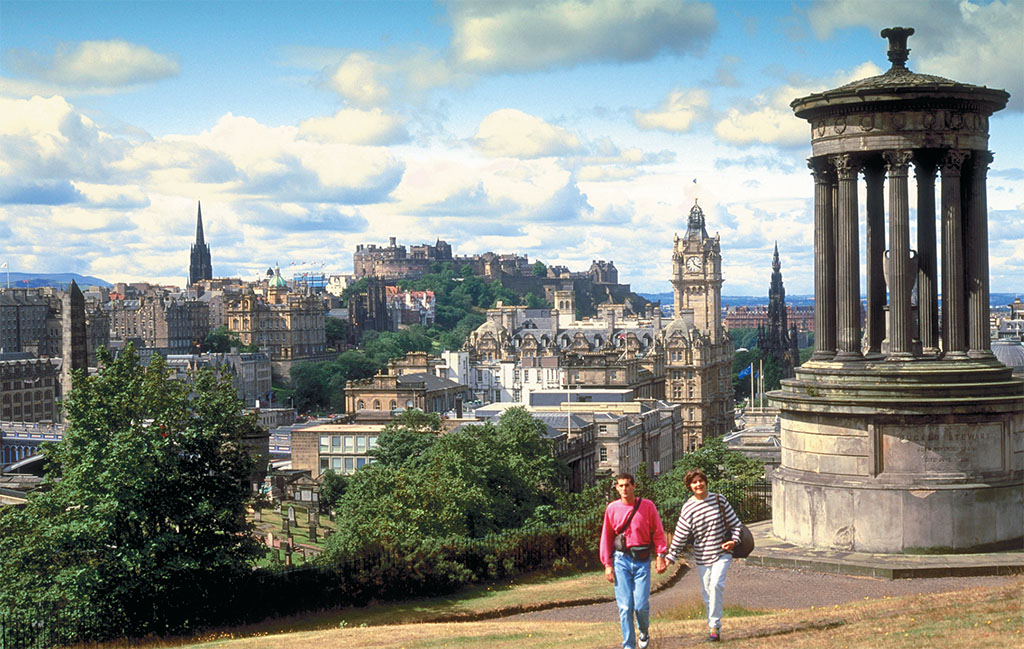
BRITAINONVIEW
When it is time to leave Edinburgh, the way to say “goodbye” is with a visit to Calton Hill. In 1878 the novelist Robert Louis Stevenson wrote that the best way to see Edinburgh and beyond is from the top of Calton Hill, “since you can see the Castle, which you lose from the Castle, and Arthur’s Seat, which you cannot see from Arthur’s Seat.” More than 100 years later the view from the top of Calton Hill, where statues of the American president Abraham Lincoln and the English naval hero Lord Nelson share the prospect with you, is still breathtaking. Stretched out below, Edinburgh dazzles us with its beauty and vitality, its history, its bright present, and future.
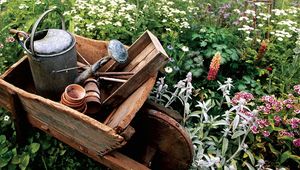
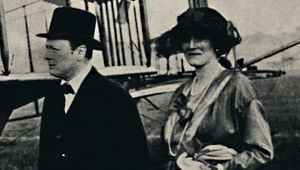

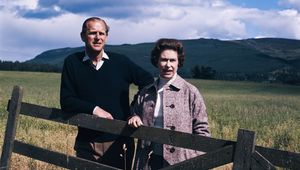
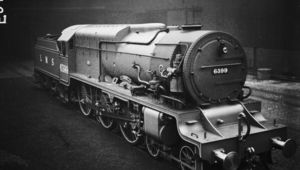
Comments